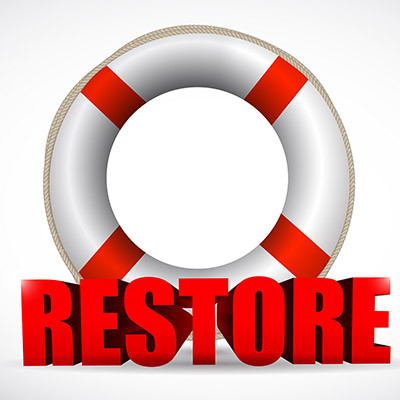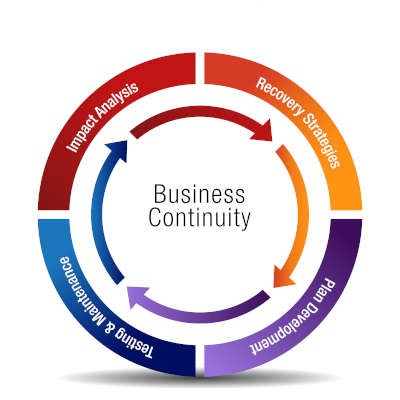World Backup Day, observed on March 31st annually, serves as a designated occasion to underscore the critical importance of regular data backups for ensuring data continuity. Although this day effectively highlights a fundamental best practice, we firmly advocate for a continuous commitment to maintaining and safeguarding backups rather than confining such awareness to a single day.
Network Synergy Blog
In business, there are always issues that need to be met. Often, there are so many that finding which ones to give priority is a chore all in itself. Choosing the best path forward depends on the situation, so when you are considering your organization’s disaster recovery you have to take into account every troubling situation your business can encounter. This month let’s go through some of the most prevalent disasters that a business can face.
A disaster can take many forms, from a raging snowstorm to deleting the wrong file. Regardless of what kind of disaster you face, you can know that it doesn’t take much to impact a business, especially if the business doesn’t have a business continuity plan in place. How does your business recover from such a devastating scenario? How can it get its data back and in proper working order? That’s what we want to tell you about today.
We often think about disasters in the context that they completely destroy the office, rendering your business incapable of operations. However, this is only part of what is encompassed by the term “disaster,” and the whole picture is far more terrifying. Any disruption to your operations can be considered a disaster in its own right, so we wanted to take some time to go over what you should look out for with your disaster planning.
Running a business is stressful, but so is thinking about a future where that business (and its data) no longer exists. If you’re not careful with your preparedness, you could stare down a disaster with no hopes of recovery. This is why we urge you to take proactive action now—so you can prevent these kinds of scenarios from taking your business off the market for good.
For modern organizations that depend highly on their technology, nothing is quite so scary as an event that can completely marginalize its ability to operate. This doesn’t need to be a fire, flood, or some other major cataclysm; it could be something as simple as some of your old IT fails and you’re not ready for it. This week, we thought we’d briefly go through what a catastrophic failure looks like and some steps you can take to keep your business from experiencing one.
There are countless ways your organization could face down a disaster, whether it’s a high-profile natural disaster, a physical disaster, or a technology-related disaster. If you aren’t prepared to face the consequences, your business could falter in the face of such incidents. How can your business best prepare itself for all manners of disasters?
A good business owner envisions the future and what it could bring about. You may have already devoted a considerable amount of time to the good things that could happen, but how often do you picture the bad? If you don’t imagine the worst-case scenario, you could be putting your business’ life on the line. Are you prepared to deal with a data loss incident?
Business can be difficult when everything goes right, but when disaster strikes, serious issues arise that need to be answered fast and if you don’t have a business continuity plan in place, your business will be in peril. It doesn’t matter what you do, if circumstances decide that your business needs to shut down, having a disaster recovery policy in place as a part of a larger continuity plan, will do more than you think to save your business.
When considering a continuity plan for your business, you need to consider some scenarios that may not ever happen. This is called risk management and it is the basis of keeping your business up and running regardless of the situations that it encounters. This month, we thought we would outline some of the variables that need to be addressed when creating a comprehensive business continuity plan.
Businesses were just hit with one of the worst disasters possible, and many of them were not prepared. It’s not often that a global pandemic hits, but businesses that were prepared to react to it were much more successful than ones that were forced to shoot from the proverbial hip. So while many businesses were overrun with new costs brought forth by the pandemic, the businesses that considered a situation like the one we’ve been facing for well over a year, and had a strategy for what they needed to accomplish to keep continuity during an event such as the COVID-19 pandemic, are faring quite a bit better than those that didn’t have a plan. This month we thought we’d outline a few ways your business can improve its disaster preparedness.
All businesses store and transmit data on a regular basis. From financial spreadsheets to client information to employee records, there is no shortage of data required by most organizations to maintain operations. What would you do if all that data were to suddenly vanish into thin air, or worse, be stolen by hackers?
Data recovery is a major pain point for small businesses, but not all organizations have the same resources and assets that make it possible. Small businesses in particular are more prone to forego data backup and disaster recovery because it does not provide an immediate return on investment. Well, we’re here to tell you that this mindset is wrong.
With the future so uncertain, it’s no surprise that many organizations are turning their focus toward business continuity. There are a lot of components that go into making a successful continuity plan, and if you want to optimize your chances of survival in the face of a disaster, you need to ensure that all your bases are covered.
When considering a continuity plan for your business, you need to consider some scenarios that may not ever happen. This is called risk management and it is the basis of keeping your business up and running regardless of the situations that it encounters. This month, we thought we would outline some of the variables that need to be addressed when creating a comprehensive business continuity plan.
The Novel Coronavirus has made its way around the world and it has certainly changed the way a lot of businesses do things. Some businesses have put in some type of disaster recovery platform. This is basically a plan for returning to continuity after some type of disaster, but we are seeing that many business continuity plans were not broad enough to take on a worldwide pandemic. Sadly, many of these businesses won’t open again.
With most businesses dipping into their disaster recovery strategies, and millions of workers either out of work or working remotely, it is honestly a great time to remind you that March 31st is World Backup Day. This is a day where we help promote the idea of taking backups of your crucial IT systems to ensure that you have access to your important information if a disaster were to strike your business.
World events have always had a big impact on the banks that one finds on Wall Street, but in many ways, the one that coronavirus (COVID-19) has demonstrated has been unprecedented. As such, it almost provides a case study of the importance that disaster recovery planning has for any business… Wall Street institutions included.
Let me ask you this: does your business have a dedicated data backup and disaster recovery system? If not, we need to talk. A comprehensive backup and disaster recovery platform (BDR) can turn out to be one of the most critical parts of managing a business’ IT infrastructure. By having a plan to turn to in the event a serious problem such as ransomware or a natural disaster descends upon your business, you can be better prepared.
You don’t need to be repeatedly told just how important risk management is. If you did, you probably wouldn’t have made it this far. One problem you see from business owners today is that while they understand just how many problems there are--and which ones they need to find solutions for first--they want to grow their company so fast that they overlook potential problems and end up hurting their business as a result. This month, we thought we would talk a little bit about contingency planning and how, if it is done right, it can have a marked effect on your business’ ability to carry-on after a problematic event.






















